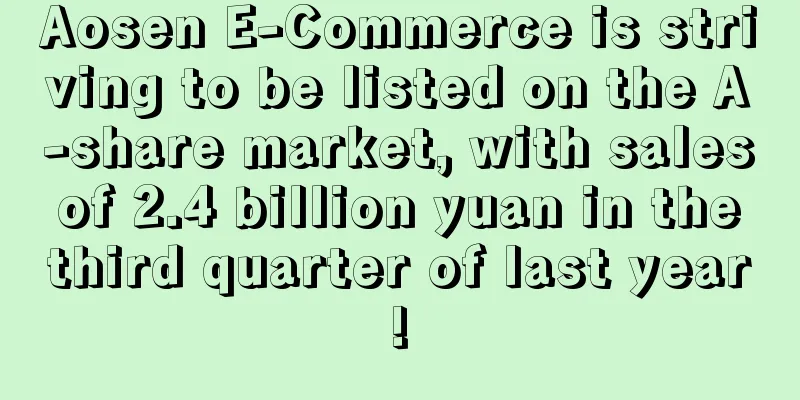The Nordic e-commerce market will exceed US$50 billion in 2020. Here is a look at the market situation

|
In 2020, the size of Denmark's e-commerce market was US$25.5 billion, Sweden's was US$15.8 billion, Finland's was US$8.5 billion, and Norway's was US$6.4 billion. As the size of the Nordic e-commerce market continues to grow, cross-border sellers can also see increasing development potential. From a political and geographical perspective, Northern Europe refers to the region north of the Baltic Sea, including five sovereign states: Norway, Sweden, Denmark, Finland, and Iceland. The Nordic market economy is well developed. In 2020, Sweden created a GDP of 530 billion US dollars, ranking 25th in the world. The total population of the four countries is nearly 22 million, and the average age of the population is 40.8 years old.
In line with their highly developed economies, the Internet penetration rate and smartphone usage rate in the four Nordic countries are quite high. According to the latest data, the Internet penetration rate in Norway and Denmark has reached 98%, ranking first in Europe, and the smartphone penetration rate in Norway is as high as 90%.
According to the latest survey results from foreign media, more than 70% of Swedes are accustomed to online shopping, followed by Norwegians. For Nordic consumers, in addition to travel products, the most popular online shopping products include clothing and shoes, accounting for 36%, followed by 3C electronic products, accounting for 25%.
It is worth noting that cross-border shopping accounts for 25% of all e-commerce sales in the Nordics , of which Finnish consumers account for 53%, Norwegian consumers account for 34%, Danish consumers account for 10% and Swedish consumers account for 24%. The most popular cross-border shopping websites among Nordic consumers include Chinese, American and German websites.
As the prices of goods in Nordic countries are high, about 25% of the goods in the country come from overseas. Therefore, cross-border goods are very competitive for the Nordic market.
When choosing a shopping platform, Nordic consumers generally choose websites that have a simple and time-saving shopping process, support local languages, and offer high-quality, low-priced, and environmentally friendly products. This is inseparable from the Nordic people's long-standing pursuit of frugality and environmental protection, and their habit of focusing on product sustainability.
The Nordic countries have developed economies and are relatively mature in online payment. Nordic consumers often use bank cards to pay for online purchases, accounting for 50% of the total online transaction payment methods. In addition to credit and debit cards, many consumers also use online banking transfers, which is the second most popular online payment method in Nordic countries, accounting for 32% of the market share. Cross-border e-commerce market Northern Europe |
<<: Five secrets driving growth in Middle East e-commerce
Recommend
What is fitzeri? fitzeri Review, Features
fitzeri is a website that specializes in selling ...
With annual revenue of nearly 6 billion, the big seller disclosed a lot of business details
In 2021, Zhiou expects its annual revenue to reac...
Net profit increased more than 5 times in half a year, Shenzhen made a lot of money from selling big
As more and more consumers recognize the value of...
What is Xinjingpu ERP? Xinjingpu ERP Review, Features
Xinjingpu ERP is a company focusing on product de...
What is ldGlobalService? ldGlobalService Review, Features
ldGlobalService provides services for third-party...
British e-commerce company ASOS acquires four Arcadia brands for £265 million
It is reported that British online fashion retail...
What is Huboo? Huboo Review, Features
Huboo was founded in Bristol, UK in 2017. It is a...
What is Bradsdeals? Bradsdeals Review, Features
Bradsdeals focus on passion and expertise creates ...
What is paypay? paypay Review, Features
PayPay is a mobile payment system in Japan that a...
What is Amazon Product Liability Insurance? Amazon Product Liability Insurance Review, Features
When operating on Amazon there is a requirement t...
What is Field Company? Field Company Review, Features
Field Company specializes in vintage cast iron pan...
What is Parsian E-Commerce? Parsian E-Commerce Review, Features
Parsian E-Commerce is the online banking subsidia...
What is jolt? jolt Review, Features
<span data-docs-delta="[[20,{"gallery"...
What is mogopod? mogopod Review, Features
Mogopod is an innovative company that prides itsel...
With a net profit of 490 million in 9 months, is Cross-Border Link going to "make a comeback"?
With a net profit of 496.7 million in 9 months, i...









